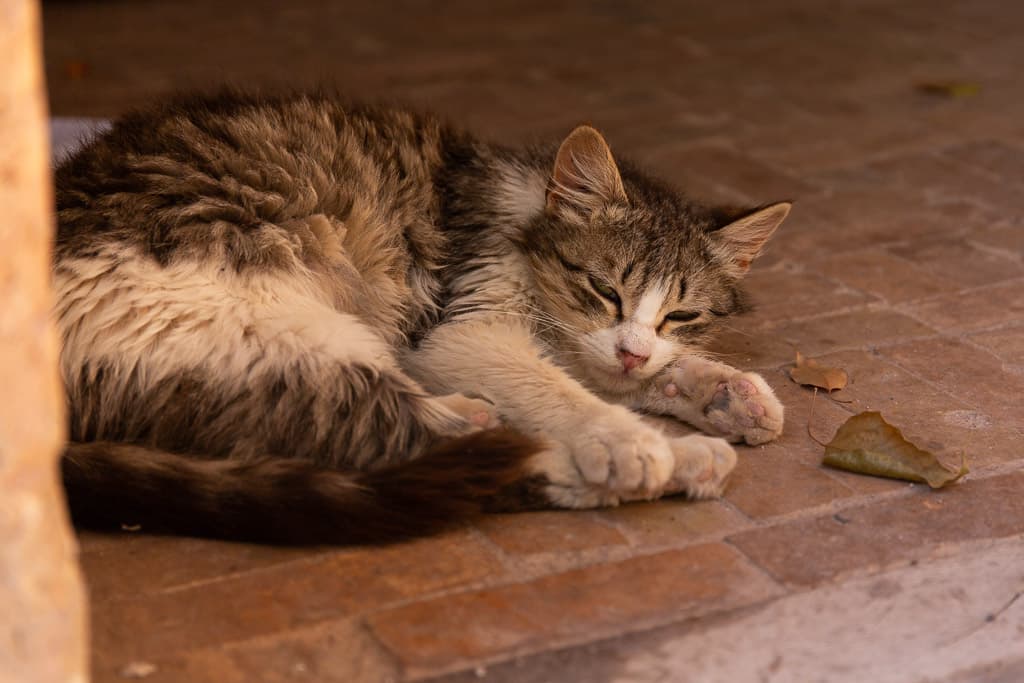Cats have fascinated humans for centuries with their mysterious behavior, elegant demeanor, and undeniable charm. Whether you're a seasoned cat owner or someone considering bringing a feline friend into your life, you likely have questions about these enigmatic creatures. In this article, we'll delve into some of the most common questions about cats and provide answers to help you better understand and appreciate these beloved pets.
1. Why do cats purr?
Purring is one of the most distinctive sounds associated with cats, and it's often interpreted as a sign of contentment. While this is true in many cases, cats may also purr when they're anxious, in pain, or seeking comfort. Some experts believe that purring serves as a self-soothing mechanism for cats, helping them relax in stressful situations.
2. Do cats always land on their feet?
Cats have a remarkable ability to right themselves in midair and land on their feet, a skill known as the "righting reflex." This reflex is a result of their flexible backbone and an inner ear mechanism that allows them to orient themselves in space. However, it's important to note that cats can still sustain injuries from falls, especially from great heights.
3. Why do cats knead?
Kneading, or making biscuits, is a behavior commonly observed in cats where they rhythmically press their paws against a soft surface. Kittens often knead their mother's belly to stimulate milk flow while nursing, and adult cats may continue this behavior as a sign of comfort or contentment. Kneading may also help cats mark their territory with scent glands located in their paw pads.
4. Why do cats meow?
Meowing is a form of communication used by cats to interact with humans, as they rarely meow to communicate with other cats. Cats may meow to solicit attention, express hunger, or communicate discomfort. The tone, pitch, and duration of a cat's meow can convey different messages, and attentive cat owners often become adept at interpreting their cat's vocalizations.
5. Are cats nocturnal?
While cats are crepuscular animals, meaning they are most active during dawn and dusk, many domestic cats adjust their activity patterns to match their owner's schedule. Indoor cats, in particular, may be more active during the day when their human companions are awake. However, it's not uncommon for cats to exhibit bursts of energy during the night, especially during their peak hunting times.
6. Why do cats bring home dead animals?
Bringing home dead animals, such as birds or rodents, is a behavior rooted in a cat's natural instincts as hunters. Cats may view their owners as part of their family or "pride" and present them with these gifts as a way of providing for them or showing off their hunting prowess. While this behavior may seem unpleasant to humans, it's a sign of affection and a testament to a cat's instinctual behavior.
7. Can cats be trained?
Contrary to popular belief, cats are highly trainable animals that can learn a variety of behaviors through positive reinforcement techniques. While they may not be as eager to please as dogs, cats can be taught to use a litter box, come when called, and even perform tricks with patience, consistency, and the right motivation, usually in the form of treats or praise.
Conclusion
Cats may be mysterious creatures, but understanding their behaviors and instincts can help foster a deeper bond between cats and their human companions. By addressing common questions about cats, we hope to shed light on these fascinating animals and encourage responsible cat ownership for years of companionship and joy.





